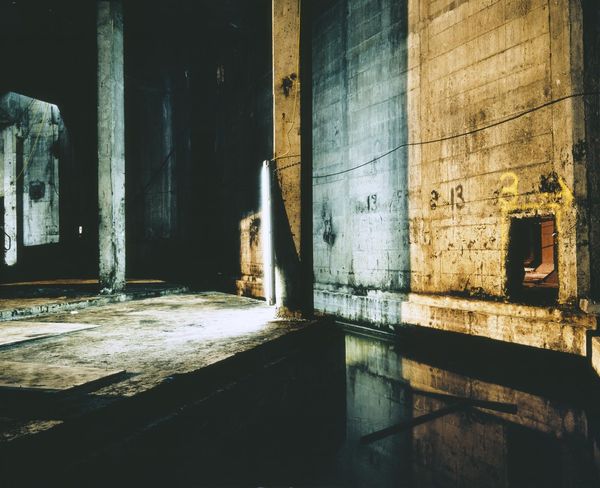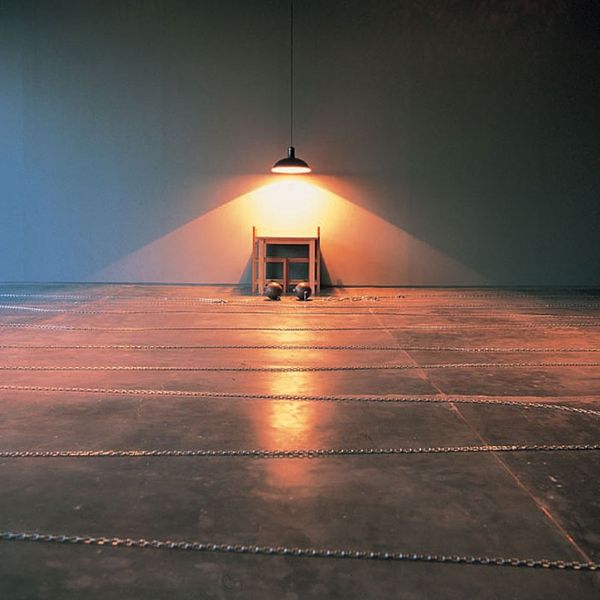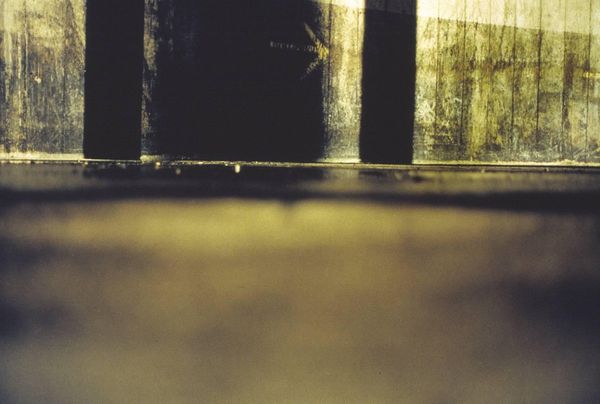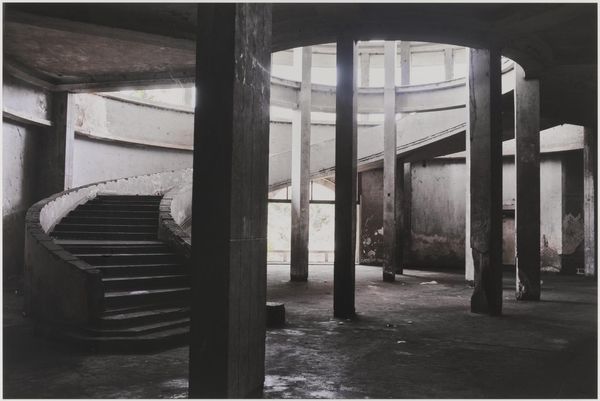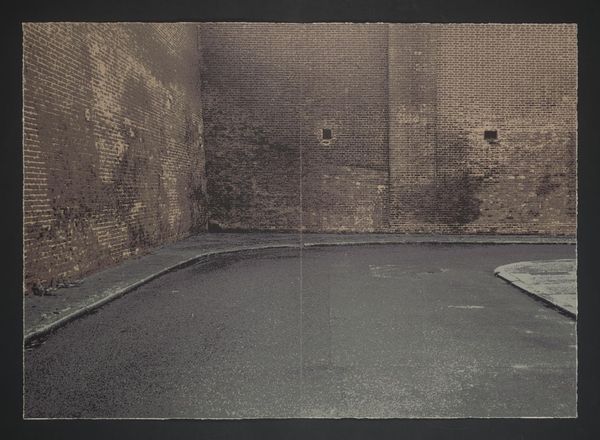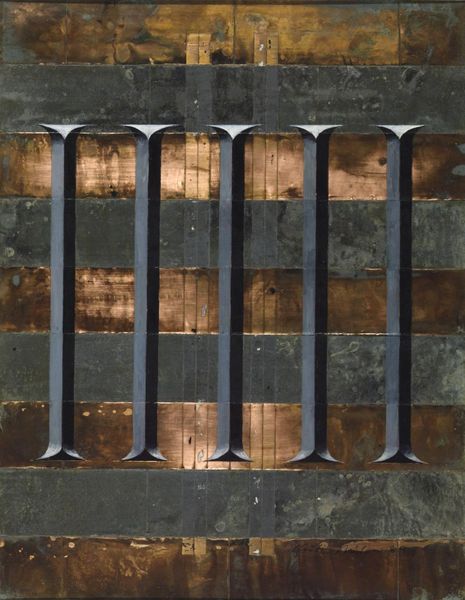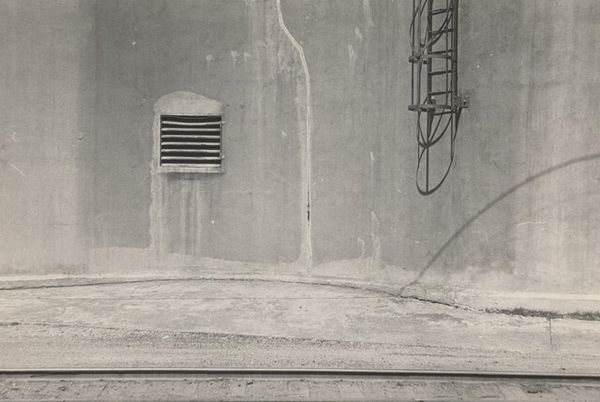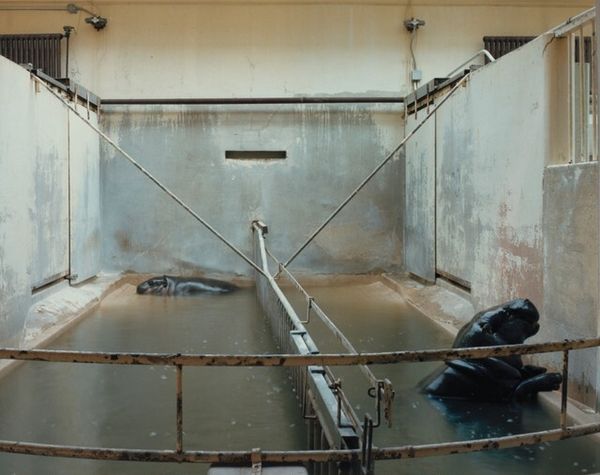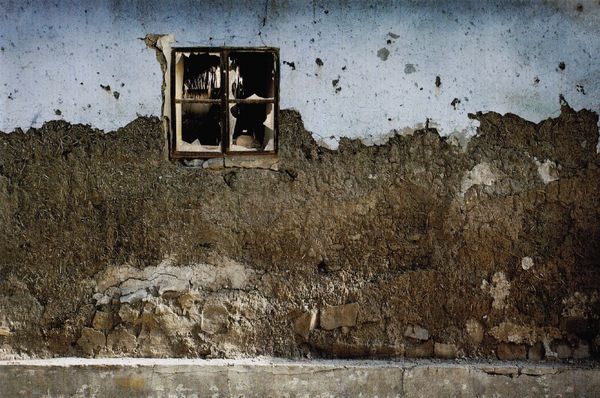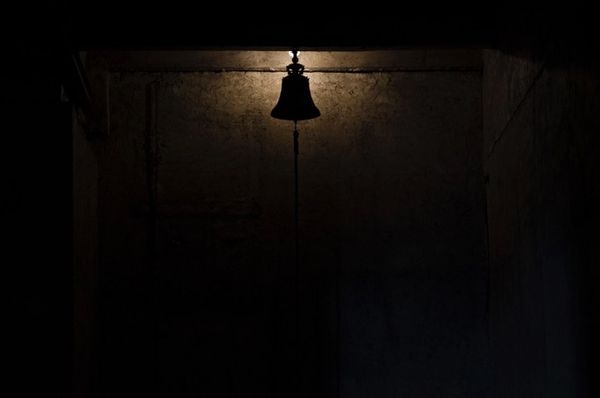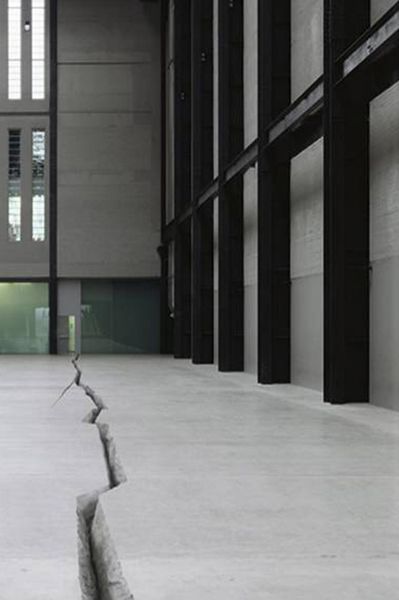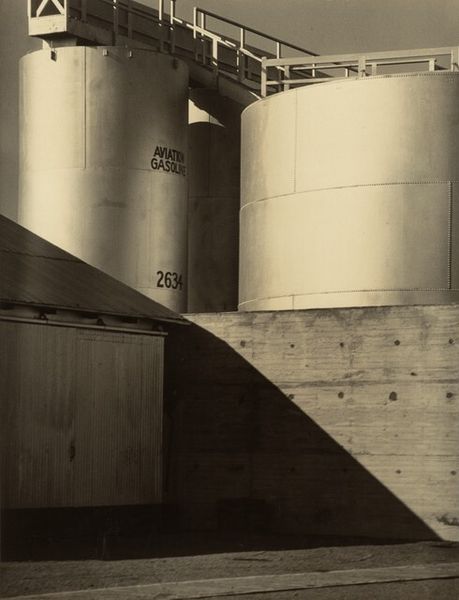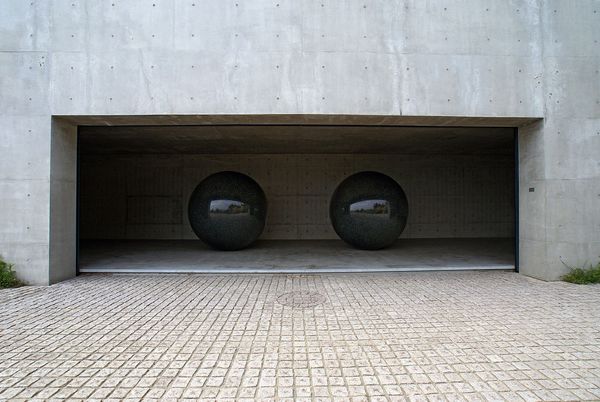
Dimensions: support: 1500 x 1840 mm
Copyright: © Christine Sullivan | CC-BY-NC-ND 4.0 DEED, Photo: Tate
Curator: Christine Sullivan’s large-scale photograph, "Echo," captures a raw, cavernous space, the rough concrete suggestive of brutalist architecture. Editor: There’s a bleakness, a sense of abandonment here, yet those pools of reflected light suggest life, or at least, a trace of human presence. Curator: The starkness, the exposed concrete, speaks to the artist’s interest in the interplay of power, gender and architecture. This feels distinctly feminist. Editor: I see more a focus on the materiality, on the sheer weight and density of the built environment, and how we engage with these spaces through labor. Curator: I read that differently. The title, "Echo," hints at the resonances of historical trauma, how such spaces can hold and reflect the echoes of marginalization. Editor: But look at the process; the way Sullivan captures the raw texture, the very act of documenting the space becomes a form of engagement with these heavy materials. Curator: Perhaps we both find something valid. It's a testament to Sullivan's work, that it invites such varied interpretations. Editor: Precisely, and it reminds us of the complex relationship between the built environment and our own physical existence.
Comments
Join the conversation
Join millions of artists and users on Artera today and experience the ultimate creative platform.
tate 8 months ago
⋮
This work was the result of a commission undertaken by the artist during the transformation of the former Bankside Power Station into Tate Modern. For sixteen months between October 1998 and February 2000 Sullivan had access to the changing site as builders worked towards realising the vision of architects Herzog & de Meuron. She has described the intention of her project, saying, ‘I chose to utilize the site’s ad hoc constructions as a means to refer to art practices and locations of art production, such as alternative art spaces and industrial studio spaces’ (correspondence with the artist, 1 June 2004). This photograph forms the left panel of a diptych with Narcissus, 1999 (Tate P20229), although the artist has specified that the works may also be shown separately. Both images were produced in an edition of five, and depict the spaces adjacent to the undeveloped oil tanks underneath the garden to the south of the building.
